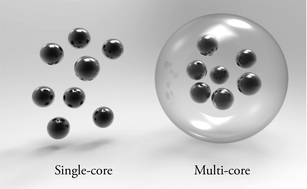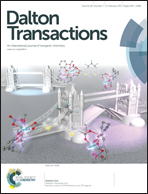Synthesis methods to prepare single- and multi-core iron oxide nanoparticles for biomedical applications†
Abstract
We review current synthetic routes to magnetic iron oxide nanoparticles for biomedical applications. We classify the different approaches used depending on their ability to generate magnetic particles that are either single-core (containing only one magnetic core, i.e. a single domain nanocrystal) or multi-core (containing several magnetic cores, i.e. single domain nanocrystals). The synthesis of single-core magnetic nanoparticles requires the use of surfactants during the particle generation, and careful control of the particle coating to prevent aggregation. Special attention has to be paid to avoid the presence of any toxic reagents after the synthesis if biomedical applications are intended. Several approaches exist to obtain multi-core particles based on the coating of particle aggregates; nevertheless, the production of multi-core particles with good control of the number of magnetic cores per particle, and of the degree of polydispersity of the core sizes, is still a difficult task. The control of the structure of the particles is of great relevance for biomedical applications as it has a major influence on the magnetic properties of the materials.


 Please wait while we load your content...
Please wait while we load your content...